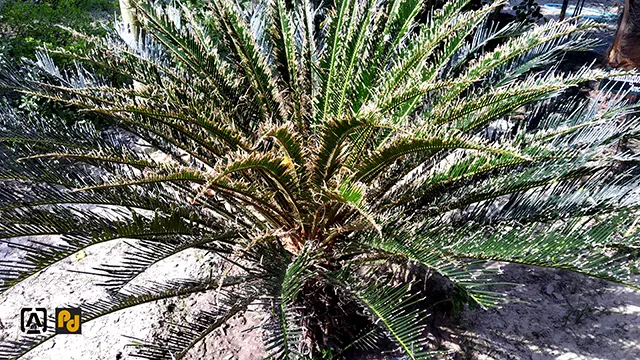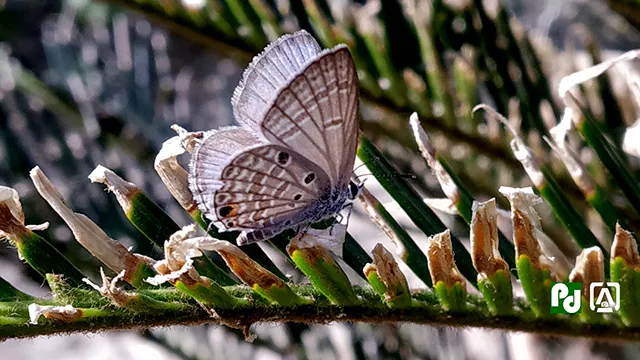Diseases of Cycas (Sago palm)
Sago palm (Cycas revoluta) is a slow growing Gymnospermous plant, that bears cones instead of flowers. The plant is dioecious means male and female plants are separate just like papaya. The stem is soft, spongy and unbranched, which bears shiny leaflets arranged like a comb teeth in a whorl at the top. The sago palm has its own place in a garden and lawn. The plant faces following problems, which is needed to be addressed for the active and fast growth.
Cycad blue butterfly
Attack on leaflets
Cycad blue butterfly (Theclinesthes onycha) is a small butterfly with pale brown wings. The wings have a metallic blue or purple sheen. The margins of hind wings contain black and orange eye-pattern with a little tail. The butterfly lays disc-shaped, pale white-blue eggs on the young tender leaves only. Green colored caterpillars are hatched from the eggs. As they mature, turn brown to deep burgundy colored. During the days, they hide underside of the leaves and feed the soft young leaves during the nights. The attacked foliage turns yellow and margins turn pale like straw. The damage caused by the larvae is magnified as leaflets grow and give ragged and burnt appearance. Older leaflets are covered with thick layer of waxy cuticle and are hard to eat, hence are unaffected.
 |
| Brown foliage of Cycas revoluta eaten by larvae of cycad blue butterfly |
 |
| Cycad blue butterfly |
Control measures
The cycas can be protected by spraying insecticidal solution to emerging young leaves at the intervals of one week until the leaf is hardened.
- Leaf should be sprayed with bifenthrin based insecticides.
- The attack can be prevented by spraying the horticultural soap solution.
- Hose down the crown of foliage before new leaves come-out. This practice wash off the eggs and larvae and prevent the eating of leaflets.
- Don't use pyrethrum based insecticides
Content first created on 11-01-2021
last updated on 22-04-2021
last updated on 22-04-2021




